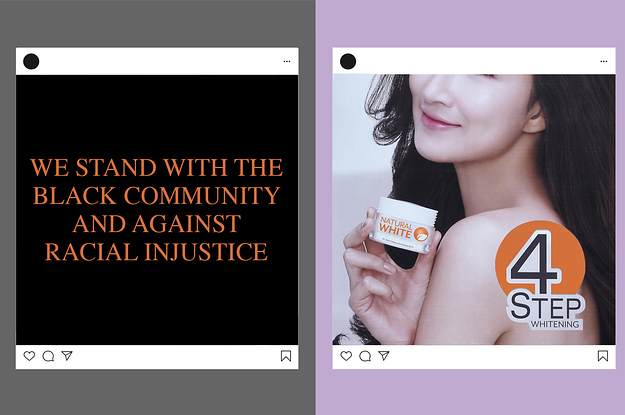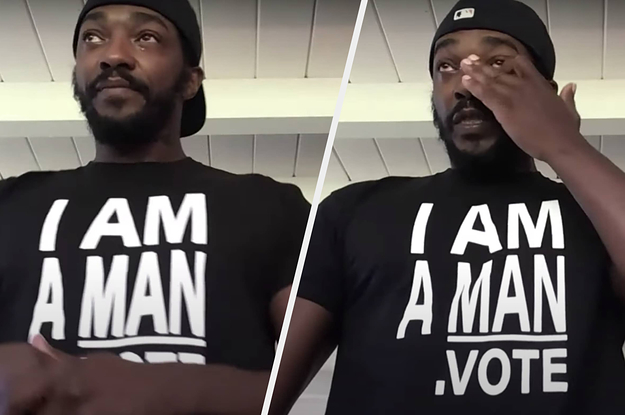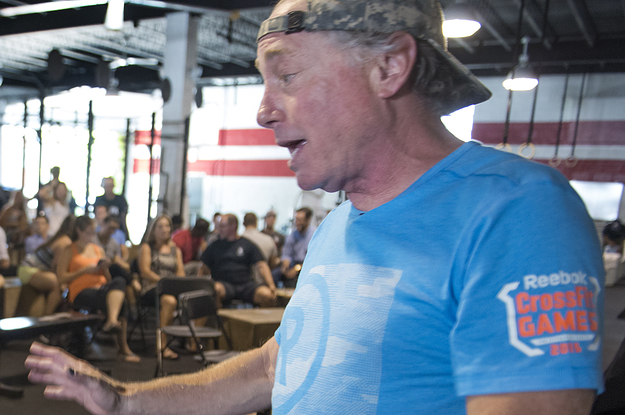Skincare, cleaning, and other practical products that’ll give you the before-and-afters you deserve and paid for, gosh darn it.
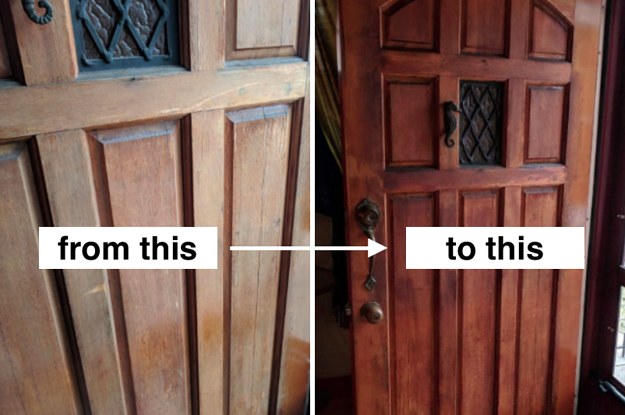
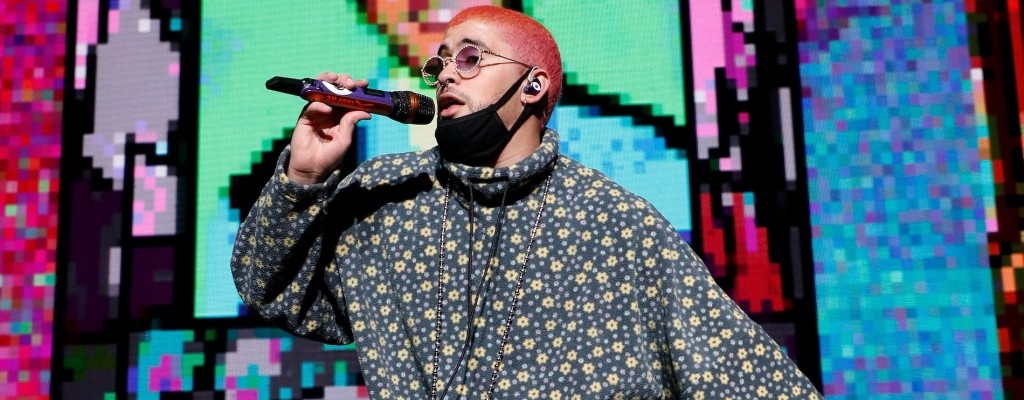
Just two months into the year, Bad Bunny shared his third album Yo Hago Lo Que Me Da La Gana. A twenty-song effort, the album would not be his only release of 2020; the Latin star returned just three months later with another album, Las Que No Iban a Salir, a title that translates to The Ones That Were Not Coming Out. A little over a week later, on May 19, Bad Bunny would begin a social media break after tweeting “bye, I left.” Since that day, a lot has happened in the world and, taking a moment to address it all, Bad Bunny shared a statement in Time magazine.
Titled “Forgive Me,” it found Bad Bunny apologizing for not speaking up sooner about the protests that have taken over the country. He also expressed his disbelief with what occurred in recent weeks. “Maybe it’s because I’ve always seen people’s hearts and, in my house, I was always taught that we are all the same regardless of race, religion, and surname; that we are all brothers/sisters,” he wrote. “I SWEAR I don’t feel well, and I don’t think I can express myself properly.”
Bad Bunny also promised to be extremely active in his efforts to fight against systemic racism rather than doing surface-level work. “There are artists who only upload a photo or a basic message just to calm public pressure or to look ‘good,’” he wrote. “Not me… I want to go deeper and see in what way I can serve, how I can support the fight against a systematic monster that has been [around for] centuries.”
You can read Bad Bunny’s full statement translated into English over here.
[via Time]
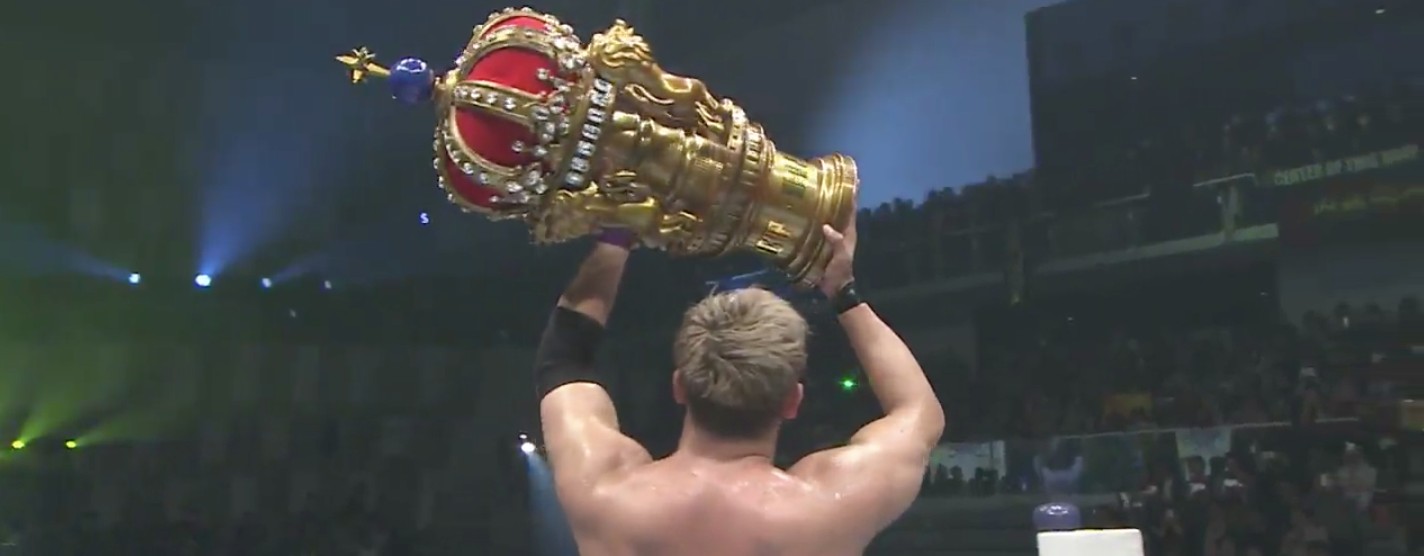
After over almost four months on hiatus, New Japan Pro Wrestling is gearing up its return. With Japan’s state of emergency prompted by the spread of COVID-19 lifted, NJPW will be back in action – with some pandemic-era changes – on June 15 with a mystery show, which will be followed by the start of a new version of the previously-canceled New Japan Cup the next night.
Since NJPW’s impromptu off-season was over 100 days long, it feels like its return is worth a primer. So here’s a breakdown of the impacts of the coronavirus on the promotion, a look back at where New Japan was before it went on hiatus, and what’s going on in its upcoming tournament. Once shows start up again, they’ll be covered in With Spandex’s Best and Worst of NJPW review column.
The Creative Impacts Of COVID-19
Before looking back at New Japan’s pre-hiatus 2020 and forward to the NJPW World Special New Japan Cup, let’s check out how the coronavirus pandemic has affected the creative aspects of the promotion’s future.
Anything cool that’s in the works is in the works with a big asterisk next to it because it’s always possible a wrestler could get sick and, in the best case scenario, have to be out of the ring for a while. In NJPW’s guidelines for wrestlers and fans about coronavirus safety, it says that “If any wrestler presents with a possible symptom of COVID-19, trainers will immediately tell that individual and everyone who has been in physical contact with them to immediately self-isolate.” It sounds like both the safe thing to do and like something that could cause some quickly re-writing of angles or last-minute cancelations of shows.
A positive aspect of these guidelines besides safety is that they continue to make New Japan look like a company that’s being transparent about how they plan to keep their wrestlers, other staff, and spectators safe. Part of following wrestling news for the past few months has been watching the promotions in the U.S. that have continued to create new material for TV inform their fans in the most roundabout ways possible about what they’re doing to prevent a coronavirus outbreak within their organization. It’s been people with backstage power “leaking” the most positive versions of company protocols to friendly news outlets, upset workers leaking the issues with how those are being carried out, executives answering questions about them in the midst of interviews about other things, and brief mentions from commentary that the large group of unmasked of people on your screen has been tested – anything but a company straightforwardly volunteering this information in a timeline that makes it seem like they might have thought about how to put on a wrestling show safely before deciding to definitely put on that wrestling show.
After following this kind of behavior for months, I was happily surprised to open NJPW’s “Policies & Countermeasures regarding COVID-19 for wrestling events (first edition),” find a six-page PDF of detailed guidelines for wrestlers and fans, and be bored out of my skull by page three. It reads like all health and safety rules I’ve ever had to read for work and not like a sales pitch for a suspicious-looking used car. If they’re not following these rules and it’s all a work, I’ve finally been effectively worked by a wrestling promotion about their coronavirus policies – that’ll happen when a company is capable of presenting itself like a normal-to-upstanding member of its community and not a swindler trying to get everything they can out of their current mark before high-tailing it to the next town.
The policies fit the company line about “corporate social responsibility” during the pandemic, and that’s something I think people can appreciate in their escapist entertainment, especially when they want to escape for a few hours from times like these. It’s easier to get invested in the wrestlers as they’re presented by the company if you feel like the company is prioritizing their safety somewhere up there with profits. And a decent company image should also be good for profits in the long term, or at least for the part of making profits that depends on keeping fans tuning in.
Some benefits besides safety to NJPW going on hiatus soon after the initial coronavirus outbreak in Japan (about a month after the first recorded case) and keeping it up through the country’s state of emergency are that 1) they’ve given fans time to miss them, and 2) ideally, NJPW’s return will be associated for some with the hard times starting to get less hard. There’s minimal dissonance between the kayfabe entity of New Japan Pro Wrestling being essentially good and the current public image of the real company. And even if it turns out that New Japan sucks so badly at putting on no-fans shows that people can’t get enjoy them despite all this built-up goodwill, they only have to get through a month before the company can have indie-sized crowds and organic crowd noise again (as long as things in Japan don’t quickly get much worse.)
Along with the hiatus and the month of zero crowds and the indefinite future of smaller crowds, the biggest impact of the pandemic on NJPW is travel bans keeping its talent that doesn’t live in Japan out of Japan. There will be a delay on English commentary versions of shows because Kevin Kelly will be calling them solo from the U.S. More significantly, closed borders also keep out New Japan’s two biggest pure heels, Jay White and Kenta. The once all-foreigner Bullet Club is by far the most affected faction; the only members who can wrestle for New Japan right now are Gedo, Jado, Taiji Ishimori, and Yujiro Takahashi, so they could… maybe get one or two junior division titles? 2020 isn’t looking great for them.
Unless foreign athletes begin to be allowed to enter Japan, and right now there’s no indication I can find about when that will happen, half of the tag team scene as we left it is gone with G.O.D. and FinJuice stuck in America. Wrestlers from ROH and CMLL hoping to participate in Best of the Super Juniors this year might be able to do so depending on if and when that tournament happens, but there’s no guarantee. And whether Will Ospreay was going to spend the year just holding the RevPro title or climb further up the NJPW hierarchy, returning to the UK halted his career momentum for an indefinite length of time. While New Japan can still put on quality matches and feuds without these guys – and Naito and Hiromu have already started stirring the pot about maybe collaborating with other major Japanese men’s promotions for the first time since 2016 – their absence has almost definitely caused some major creative changes.
An unexpected upside to all of New Japan’s titles happening to be held by people who live in Japan before the borders closed and how the timeline of the country’s reopening worked is that the company doesn’t have to make a special pandemic exception to the rule that wrestlers have to defend their titles every six months – except for, unfortunately and kind of hilariously, Jon Moxley.
Mox and ZSJ were set up to have a match at some point, but now, unless he’s able to wrestle for NJPW in the U.S. like he very much was not last summer, he might have to vacate the United States Championship for a second time for a failure to defend it through no fault of his own. Will they make an exception and say he just has to defend it when he can get back in the country? Will they have him vacate it and hold a tournament or something to crown the new champ? Would they just retire the star-spangled belt and never talk about it again? Mox’s defense against Suzuki was on February 9, so we have until August to find out.
The Kings Of The King Of Sports
.@s_d_naito ‘ Stardust Press’
Sign up Now & Stay tuned to https://t.co/Tj7UBJ4PjP#njpw #njpwworld #njwk14 pic.twitter.com/Decty5pdnf— njpwworld (@njpwworld) January 5, 2020
As for the titles that can be defended soon, they’re mostly in the hands of Los Ingobernables de Japon. Before 2020 became an unceasing rainstorm of a year, it began as L.I.J.’s long-awaited time in the sun.
After starting in 2015 as a pure heel faction and becoming fan favorites and outlaw babyfaces, all of Los Ingos except Sanada left the Tokyo Dome carrying gold. Tetsuya Naito’s triumph was the biggest, and not just because he won both the IWGP Heavyweight Championship and Intercontinental Championship. Naito began the year by completing an over six-year journey from fan-rejected babyface who couldn’t beat Okada at Wrestle Kingdom 8 to heel who acted like he didn’t care about the fans or anything else anymore to a man turned babyface again by crowd love, and a man who could beat the odds and Okada at the Tokyo Dome to become the people’s double champion.
Hiromu Takahashi won the IWGP Junior Heavyweight Championship in a different kind of comeback story. He had spent almost a year and a half out of action with a neck injury before returning to regain the title he was forced to vacate by defeating the guy who had replaced him at the top of the junior division. The second night of Wrestle Kingdom solidified Takahashi’s place as junior ace when he pinned Jushin Thunder Liger in the icon’s final match. With a great first defense against Lee under his belt and a lot of hype around his now-canceled first-time-ever match with Naito, Hiromu’s stock was high going into the Anniversary Show that didn’t happen, and it feels just as high after a months-long absence.
NEVER OPENWEIGHT CHAMPIONSHIP MATCH@Takagi__Shingo vs Tomohiro Ishii
Replay ‘NEW JAPAN ROAD Night 1’ (Feb. 20, 2020)
Watch on New Japan World︎https://t.co/CcdQ1X9P52#njpw #njpwworld #njroad pic.twitter.com/fDsJHo7p8I
— njpwworld (@njpwworld) February 21, 2020
Evil, Bushi, and Shingo Takagi won more gold for Los Ingos in the form of the NEVER Openweight 6-man Championship ever, or at least since the last time an L.I.J. team had them. The part of the trio with the most momentum was Shingo Takagi, who joined the ranks of NJPW singles champions when he picked up the NEVER Openweight title in February. Like the L.I.J. trio with the 6-man belts, he seemed primed to put some new shine on the belt after defeating the two men who have held it the most, Goto and Ishii, and to elevating the title and using it to show what he can do as a wrestler.
Outside of L.I.J.’s concentrated glory, both sets of tag titles are held by more clean-cut babyface teams, both of which won their belts from Bullet Club heels. Roppongi 3K (Sho and Yoh) regained the IWGP Junior Heavyweight Tag Team Championship at Wrestle Kingdom, and travel bans mean that minus character development, the junior tag division is now back where it was in 2018, with R3K, Desperado and Kanemaru, and Hiromu and Bushi as the three active junior tag teams.
Meanwhile, the IWGP Heavyweight Tag Team Championship is in new hands, those of Golden Ace, the super team of Kota Ibushi and Hiroshi Tanahashi. Their win injected the division with star power (while giving unoccupied singles stars something to do), and immediately drew new challengers. The lack of FinJuice and G.O.D. could easily have knocked the plans for the heavyweight tag division off track, but for now, Ibushi and Tanahashi vs. Taichi and Zack Sabre Jr. is New Japan’s one pre-hiatus feud that looks like it’s picking up exactly where it left off, just three months later than everyone expected.
The New New Japan Cup
That brings us to the NJPW of the near future and the NJPW World Special New Japan Cup, the version of the 2020 New Japan Cup with more junior heavyweights, less international talent, and no fans (until the final.) How NJPW copes creatively with the lack of an audience could make or break this tournament, but it looks promising on paper, especially after months of no New Japan at all. Adding juniors created some matchups (and potential matchups) that are fresh and interesting – and the less fresh and interesting ones at least mean fans don’t have to wait until whenever BOSJ rolls around to see a few junior heavyweight singles matches.
Some of the New Japan Cup’s brackets have more underlying drama than others, while some have most of their appeal from rare matchups. Some also have significantly more semi-final and final contenders than others. I’ll stop short of predicting who I think will win the tournament here (I did do that on Twitter though), but I’ll break down the tournament’s first round matches and where they could lead.
Top Left (Starts June 16)
The top left bracket is low on wrestlers who you’d guess could win the whole Cup, but higher on interesting matchups. One of those is Tomohiro Ishii vs. El Desperado, a match that could easily have just never happened for their entire careers if not for the weird circumstances of this tournament. Along with being a completely new pairing, these are two who could easily mesh really well. Ishii’s great at bringing the inner badass out of people, inspiring them to step up to his level, and Desperado has shown he can do that in his feud with Hiromu. This could easily be one of the best matches of the first round.
The bracket also includes Togi Makabe vs. Yota Tsuji, a brawler past his prime vs. a Young Lion on his way to joining the lineage of NJPW tough guys. Makabe’s in his late forties, but he’s shown he can still deliver when the situation calls for it. Unfortunately, that hasn’t been the case for the two other older wrestlers in the group. Toru Yano vs. Jado should probably keep things short and comedic for both Jado and the audience’s sake. Hiromu Takahashi vs. Tomoaki Honma is a battle of men who have survived devastating neck injuries, and though Honma regained his six-pack and his ability to move, he looks completely broken down in the ring, and it’ll be really impressive if he and Takahashi pull off a banger.
Past the first round: Beyond round one, this bracket has the potential for some really cool matches. The idea of Makabe and Ishii slugging it out again is exciting when you think back to their 2015 rivalry for the NEVER title, and Yano vs. Hiromu is a clash of the galaxy brain titans. Yano is the master of beating people out of nowhere with tricky, fast pins, and one of Hiromu’s best moments (of the many his career has had already) was beating Kushida in like two minutes at Sakura Genesis 2017. A little further in the future, there’s the possibility for either Yano vs. Ishii III or Hiromu vs. Ishii for the first time, a battle of two fan-favorites that almost seems too good to hope for.
Biggest contenders: It’s easy to imagine Ishii making it to the semi-finals, or maybe Hiromu, in what would be a surprising and exciting run for the junior champ in this tournament, especially since we were denied Naito vs. Hiromu in March.
Bottom Left (Starts June 17)
This bracket is heavy on replacement wrestlers and matches as well as drama, and some of that drama is unique to this version of the tournament. Jay White vs. Okada was replaced with Gedo vs. Okada, giving the younger wrestler an opportunity for revenge on his manager for leaving him for Jay Whiter pastures two years ago. They had a shenanigans-heavy match in late 2018 (Gedo MACED OKADA) and Okada has squared off with his former manager in tag matches many times now, but does that mean people have lost the desire to see him Rainmaker Gedo out of his cabby hat? I don’t think so!
We also have a longer-running personal feud in Yuji Nagata vs. Minoru Suzuki. Their rivalry started when Suzuki return to NJPW from the MMA world in 2003, has its roots in a real high school amateur wrestling match, and has included two really good Wrestle Kingdom matches. While Nagata and Suzuki are two of the oldest people on the New Japan roster, they’re also two who can still bust out exciting performances, and this could easily be a first round highlight.
Yuya Uemura vs. Yoshinobu Kanemaru and Gabriel Kidd vs. Taiji Ishimori pit the most baby Young Lions against former Pro Wrestling NOAH stars turned New Japan heels. The kids are doomed, but these matches could be pretty good!
Past the first round: Assuming Okada beats Gedo, he could face either a longtime rival in Suzuki, or take on Nagata in only their second singles match ever. (When I checked Cagematch about this, I thought there must be some I had forgotten, but they only ever went one-on-one in the 2015 G1 Climax.) Kanemaru vs. Ishimori would add to a NOAH rivalry that’s been referenced in New Japan a few times now, including that Kanemaru is kind of Ishimori’s Kryptonite. He really should have remembered that when Ishimori had the junior title last year, and we really might see Suzukigun’s drunkest uncle get to the quarter-finals.
Biggest contenders: Okada, or Gedo if he goes mad with power.
Top Right (Starts June 22)
The top right section of the New Japan Cup bracket is the one with by far the most high-level guys, and, appropriately, the most champions. Taichi vs. Hiroshi Tanahashi and Kota Ibushi vs. Zack Sabre Jr. are matches that continue the heavyweight tag title feud, two of the few matches remaining intact from the first version of the tournament, and matches with one-on-one drama. ZSJ and Taichi attacked Golden Ace after their tag title win, but that didn’t get them a title match. If one or both heels won their matches here, Dangerous Tekkers will have earned one, and just in time for one-third capacity Dominion.
Taichi vs. Tanahashi is also a rematch from Taichi’s second singles match as a heavyweight, the 2018 New Japan Cup match that showed his performance against Naito hadn’t been a fluke and this dude actually kicked ass after moving up a weight class. Two years and change later, Taichi would obviously love a win over the Ace even more.
Ibushi and ZSJ have a much more established rivalry. They have strong chemistry and clear good vs. evil dynamic, and they’re evenly matched both within each of their singles matches and in their overall history. In their five singles matches over the past three years, Ibushi has won three and Zack two, with both of Zack’s in New Japan Cups.
The bracket’s other two first round matches are L.I.J. vs. juniors, with one likely to be much more heated than the other. Sanada vs. Ryusuke Taguchi is a weird first-time thing, and it could easily go in a more comedic or serious direction; it’s one of the few matches in the tournament where I really can’t guess what the tone will be.
.@njpwShowT ‘German Suplex Hold’
Sign up Now & Stay tuned to https://t.co/Tj7UBJ4PjP #njpw #njbosj #njpwworld pic.twitter.com/q6ZWMd4Iml— njpwworld (@njpwworld) May 13, 2019
With Sho vs. Shingo Takagi, we have a better idea of what to expect, and that’s part of what makes it so exciting. These two want to hit each other as hard as they hit the weights, and they have the most tension of any pair going into the first round. Their rivalry began when they were on opposite sides of the tag title picture in 2018 and Shingo knocked Sho out of his spot as the number one power junior. He went on to defeat Sho in an awesome match in last year’s BOSJ, then steadily rose through the New Japan ranks all the way to winning the NEVER title – and gave Sho, a guest commentator for that match, a little salute as he made his exit with the belt.
Since then, the two have called each other out in promos – Sho without naming names – and continued their drama during New Japan’s hiatus, with Shingo tweeting that Sho’s biggest obstacle in his career is that he’s too nice of a guy and revealing on Tele Pro-Wrestling that after their BOSJ match he told him, “I’ll be waiting for you to claw your way to the top.” Now Sho gets another shot at Takagi through basically a twist of fate. Previously, he was frustrated about juniors not being able to get opportunities through competing in the New Japan Cup, and now he’s miraculously in it, with the chance to get earn exactly the opportunity he’s been looking for.
Past the first round: There are so many possibilities! There could be one half of the tag champs vs. the other half of their would-be challengers (and Ibushi vs. heavyweight-era Taichi would be new) or NJPW could revisit the Ibushi vs. Tanahashi or we could get an intra-Suzukigun match with ZSJ vs. Taichi, which would be their first match since Sabre was a babyface in NOAH. Sanada vs. Sho would be a new pairing and Sanada vs. Takagi would be a new pairing and L.I.J. vs. L.I.J. Overall, this looks likely to be the tournament’s strongest bracket.
Biggest contenders: Ibushi, Tanahashi, ZSJ, Sanada, Takagi, maybe Taichi.
Bottom Left (Starts June 23)
Like the absence of White in the bottom right, the lack of Kenta in the bottom left bracket saps it one of its biggest potential sources of drama and most major players. We’re left with a weird group of first round matches and beyond.
Hiroyoshi Tenzan vs. Yoshi-Hashi is a pairing that reminds you that most New Japan Cups have included half this many people. Yoh vs. Bushi is a matchup of sort of rivals from opposite sides of the junior tag title feud, it and could easily set up a Hiromu and Bushi vs. R3K bout in the near future. Satoshi Kojima vs. Evil is a promising heavyweight match: Kojima, like Makabe, is getting up there in years, but can still go when he gets the opportunity, and Evil is a singles title tier guy who just hasn’t won a lot of singles titles. And Hirooki Goto vs. Yujiro Takahashi is… also a match in this bracket!
Past the first round: Whichever wrestlers win Tenzan-Yoshi-Hashi and Yoh-Bushi are going to go into one of the weirdest matchups of the second round. I’d bet on Goto vs. Evil over Goto vs. Kojima because of the dynamic between Goto and Evil in tag matches this winter. And Yoshi-Hashi is probably going to the quarter-finals? This is a weird tournament.
Biggest contenders: Evil, Goto.
The new version 2020 New Japan Cup has some clear highs and lows on paper, but overall, it’s easy to feel positive about. The wrestlers are back on our screens after a responsible break, we’re getting some unique matchups, and the shows will soon have that sweet, sweet crowd noise. The future is incredibly uncertain right now, but it looks like whoever wins the New Japan Cup, this post-hiatus tournament should be a win for New Japan.
For the past two months, Lil Wayne has delivered weekly episodes of his Young Money Radio show from his Miami studio. Over the initial seven episodes, the rapper has brought on a wide array of guests, including Killer Mike, YBN Cordae, Eminem, Drake, and Lil Baby. He brought another Young Money artist on board for his latest episode, Nicki Minaj, so the two could discuss music and life.
Wayne and Minaj began their sit-down by playing a few tracks from the Young Money collective. They then dove into a discussion of what it’s like to be a woman in rap. “I just knew I was going to make it, so I was enjoying the groundwork of it and I was working super hard,” Minaj said. “I think people don’t realize the work that goes into it. Because if you’re not going to work, why bother?” She also opened up about her initial worries prior to signing to Young Money. “It was getting someone to take you serious, and that was the whole thing I was worried about,” she explained. “I didn’t know if you would take me serious, because at the time people had really given up on female rappers.”
Wayne later asked Minaj about her recent silence and toned-down presence on social media. “It can be so like, extra,” Minaj said. “I think everybody needs that time to themselves and their family and to think and for — when people stay on social media — their thoughts become everyone else’s thoughts. They can’t think for themselves.”
Wayne also floated the idea of a joint album with Minaj, to which she responded, “Whatever you want your wish is my command.” Minaj also spoke about her recent No. 1 song with Doja Cat, “Say So (Remix),” saying, “I have never built my career on whether or not something goes number one. Most of the things that stick forever in rap, they don’t go number one.”
The interview arrived shortly after Nicki and Tekashi 69 debuted their new single, “Trollz.”
You can watch Lil Wayne and Nicki Minaj’s full conversation in the video above.
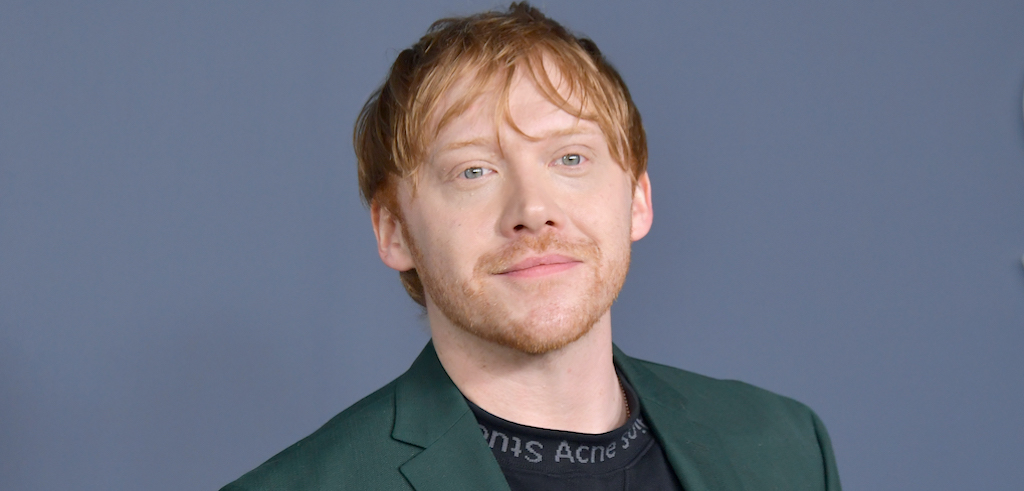
It’s been a week since J.K. Rowling went on an inexplicable diatribe about the trans community, enraging fans and Harry Potter actors alike. Daniel Radcliffe was the first to speak out, not so much condemning her personally as voicing unwavering support for transgender and non-binary people. Eddie Redmayne, of the Fantastic Beasts series, followed, as did Emma Watson. Now, as per the BBC, Rupert Grint has joined them, meaning all three main stars of the Potter films have stood up in defiance of the author who made them names.
“Trans women are women. Trans men are men. We should all be entitled to live with love and without judgment,” Grint said in a statement released to The Times. “I firmly stand with the trans community and echo the sentiments expressed by many of my peers.”
Those peers don’t only include Radcliffe, Watson, and Redmayne; other Potter actors have also expressed solidarity with the trans community, including Bonnie Wright and Katie Leung. Rowling has so far stood firm on her beliefs, even doubling down with an open letter in which she spoke about her own experiences of alleged sexual abuse and domestic violence. Her ex-husband, Jorge Arantes, later responded, admitting to slapping her but denying prolonged abuse.
(Via BBC)

